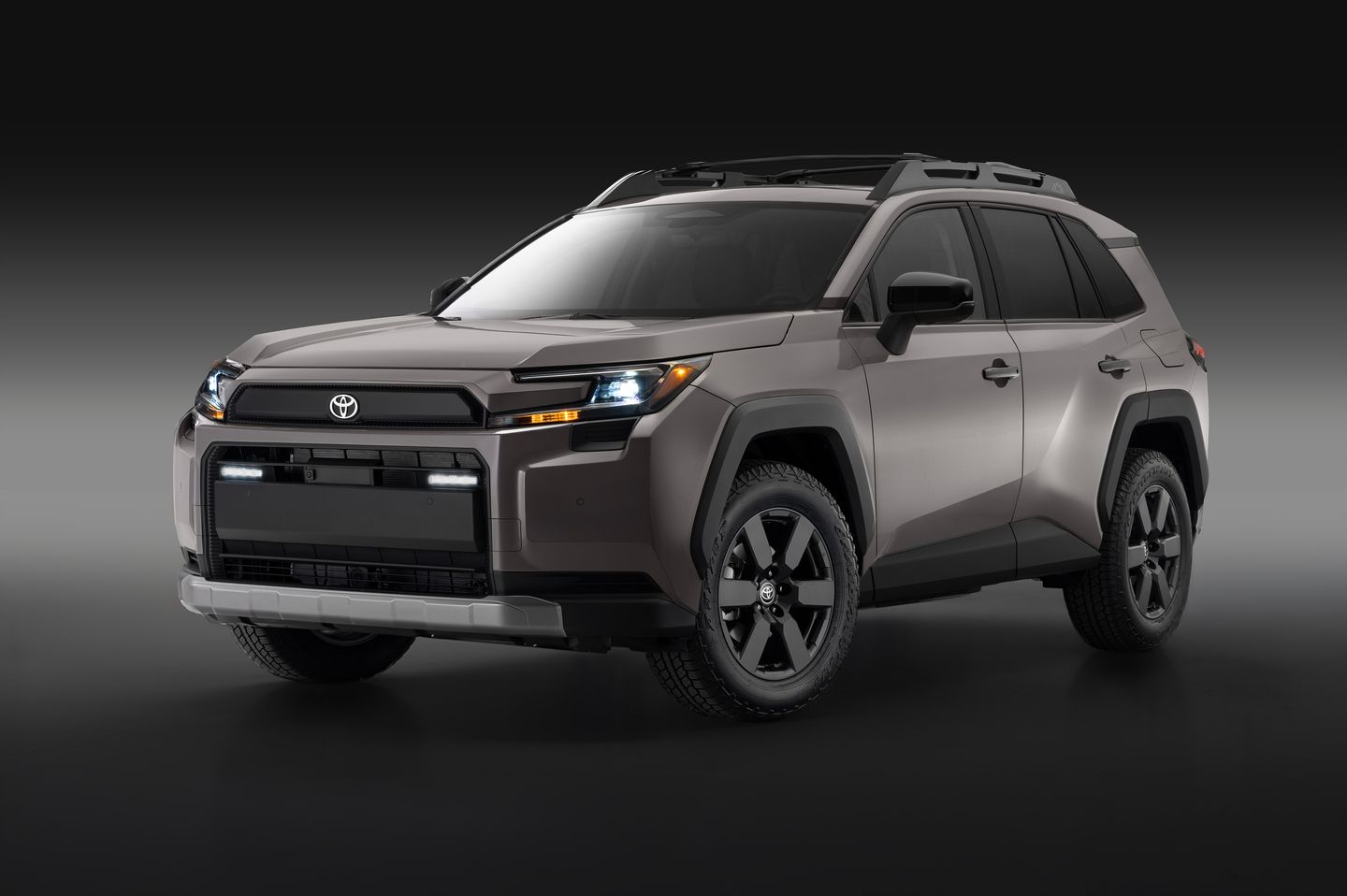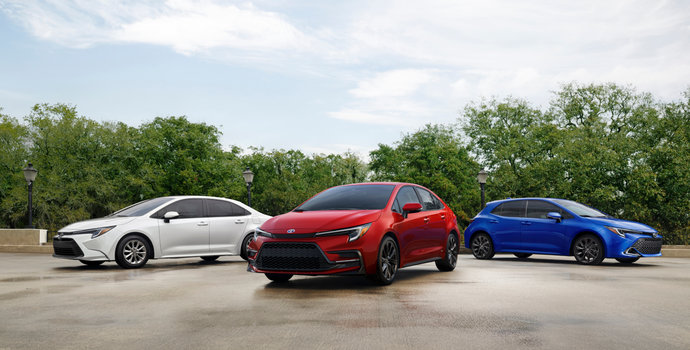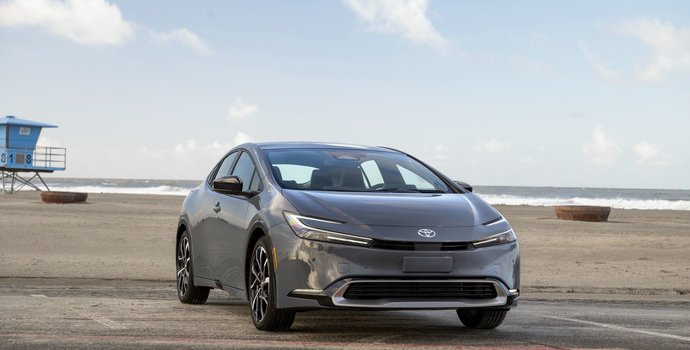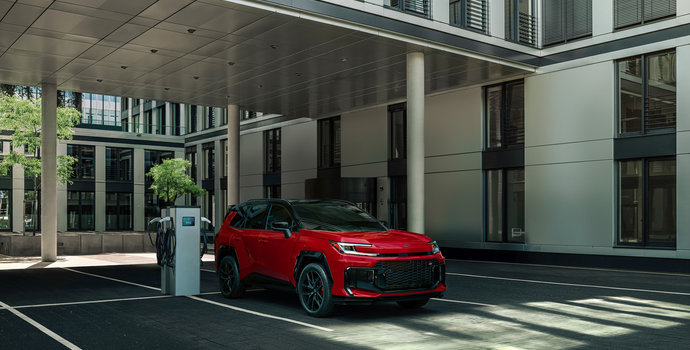Choosing between a pure electric vehicle and a hybrid can feel like standing at a crossroads. Do you commit fully to electric driving, or do you keep the flexibility of a gasoline engine? For drivers in Oakville, the 2026 Toyota bZ and 2026 Toyota RAV4 offer two distinct answers to this question—each with compelling reasons to consider.
Both vehicles represent Toyota's commitment to electrified driving, but they take different paths to get there. The bZ delivers pure electric performance with zero tailpipe emissions, while the RAV4 offers hybrid and plug-in hybrid options that combine electric motors with a gasoline engine. Understanding which approach fits your lifestyle starts with examining how you actually drive, where you charge, and what you need from your SUV.
At a Glance: 2026 Toyota bZ vs. 2026 Toyota RAV4
|
Feature
|
2026 Toyota bZ
|
2026 Toyota RAV4
|
|
Powertrain Options
|
Pure electric (FWD or AWD)
|
Hybrid Electric (HEV) or Plug-in Hybrid (PHEV), all AWD in Canada
|
|
Power Output
|
168 hp (FWD) or 338 hp (AWD)
|
236 hp (HEV) or up to 320 hp (PHEV)
|
|
Electric Range
|
380 km (FWD), 468 km (XLE AWD), 436 km (Limited AWD)
|
80 km all-electric (PHEV only)
|
|
Charging Port
|
NACS (North American Charging System)
|
J1772 standard (CCS on PHEV XSE Technology Package)
|
|
Towing Capacity
|
Not Recommended
|
Up to 1,588 kg (3,500 lbs) on select grades
|
|
Starting MSRP
|
$45,990 (bZ XLE FWD)
|
To be announced
|
Performance and Power Delivery

The performance story here splits into two very different chapters. The 2026 Toyota bZ AWD models deliver 338 hp through upgraded eAxles with silicon carbide semiconductors, enabling acceleration from 0-100 km/h in approximately 5.1 seconds. That's the kind of instant torque response you only get from electric motors—no lag, no hesitation, just immediate power. The bZ XLE FWD offers a more modest 168 hp, suitable for daily commuting and city driving.
The 2026 Toyota RAV4 HEV uses Toyota's fifth-generation hybrid system paired with a 2.5 L 4-cylinder engine, producing 236 hp. The PHEV version steps up to 320 hp, combining the same engine with two electric motors and a high-capacity battery. While the PHEV's power output comes close to the bZ AWD, the driving experience differs—the bZ offers pure electric acceleration, while the RAV4 PHEV switches between electric and gasoline power based on driving conditions.
For drivers who prioritize straight-line acceleration and electric driving feel, the bZ AWD holds the advantage. For those who want strong performance with fuel flexibility, the RAV4 PHEV delivers competitive power without range anxiety.
Range, Charging, and Real-World Practicality
This is where the fundamental difference between these vehicles becomes clear. The 2026 Toyota bZ operates exclusively on electricity, offering 380 km of range on the FWD model, 468 km on the XLE AWD, and 436 km on the Limited AWD. Every bZ includes the NACS charging port, giving you access to thousands of DC fast charging stations across Canada. Under ideal conditions, DC fast charging can boost the battery from 10 percent to 80 percent in approximately 30 minutes. All models also support Level One and Level Two AC charging with an 11-kW onboard charger.
The 2026 Toyota RAV4 HEV doesn't plug in at all—it charges its battery through regenerative braking and the gasoline engine. You fill up at gas stations like a conventional vehicle, but with significantly better fuel economy thanks to the hybrid system. The RAV4 PHEV offers 80 km of all-electric range, enough for many daily commutes without using gasoline. Once the battery depletes, it operates as a regular hybrid. The PHEV XSE Technology Package includes DC fast charging capability (10% to 80% in approximately 30 minutes), while SE, XSE, and GR SPORT PHEV models use a J1772 charging port with up to 11-kW AC charging.
For Oakville drivers with predictable daily routes and home charging access, the bZ's electric-only operation makes sense. For those who regularly drive beyond electric range or lack reliable charging infrastructure, the RAV4's flexibility eliminates range concerns entirely.
Key Charging Considerations:
- bZ owners need home charging or regular access to public charging stations
- RAV4 HEV requires no charging infrastructure—just gasoline
- RAV4 PHEV offers best of both worlds: electric commuting with gasoline backup
- bZ's NACS port provides broader fast-charging network access than previous generation
Technology and Connectivity

Both vehicles showcase Toyota's latest technology, though with different implementations. The 2026 Toyota bZ features a 14-inch Toyota Multimedia touchscreen with wireless Apple CarPlay and Android Auto integration. The system includes three USB charging ports, dual 15-watt wireless phone charging docks, and a 1,500-watt A/C outlet. A seven-inch digital gauge cluster and 64-colour customizable ambient lighting complete the tech package. Every bZ comes standard with Toyota Safety Sense 3.0.
The 2026 Toyota RAV4 introduces Toyota's Arene software development platform, powering the new Toyota Multimedia system and Toyota Safety Sense 4.0. The RAV4 offers either a 10.5-inch or available 12.9-inch touchscreen, with a standard 12.3-inch digital gauge cluster across all grades. Digital HVAC controls integrate into the touchscreen, and a Head-Up Display comes standard on Limited HEV and XSE Technology Package PHEV grades. The system supports wireless Apple CarPlay and Android Auto with simultaneous dual Bluetooth phone connectivity.
The RAV4's Arene platform represents Toyota's first step toward software-defined vehicles, enabling more advanced features and future updates. The bZ offers a more established system with proven reliability. Both vehicles provide comprehensive connectivity, with the RAV4 gaining an edge in display size options and software advancement.
Interior Space and Versatility
The 2026 Toyota bZ prioritizes spaciousness and comfort, offering legroom equivalent to a large sedan with extra-wide side-to-side space in the rear seat. The 60/40 split folding rear seat enables flexible cargo configurations. Premium finishes and soft-touch materials create an upscale environment, enhanced by the 64-colour ambient lighting system. Heated Softex-trimmed steering wheel and dual-zone automatic climate control come standard across all grades.
The 2026 Toyota RAV4 emphasizes functional utility with multiple interior configurations across Core, Rugged, and Sport designs. Seating surfaces range from fabric to SofTex, with the Woodland grade featuring unique perforated soft-touch panels, red-orange accents, and branded all-weather floor mats. The center console combines the shifter, cup holders with removable divider, and storage bin for organized functionality. Select grades include Toyota's new shift-by-wire system with a minimalist toggle switch.
The RAV4's structural updates include reinforced frame joints and suspension mounting points, plus high-damping adhesive that reduces micro-vibrations and road noise. Select RAV4 grades can tow up to 1,588 kg (3,500 lbs), adding practical capability the bZ doesn't specify.
For pure passenger comfort and upscale feel, the bZ delivers. For versatility, cargo management, and towing capability, the RAV4 offers more options.
Safety and Driver Assistance
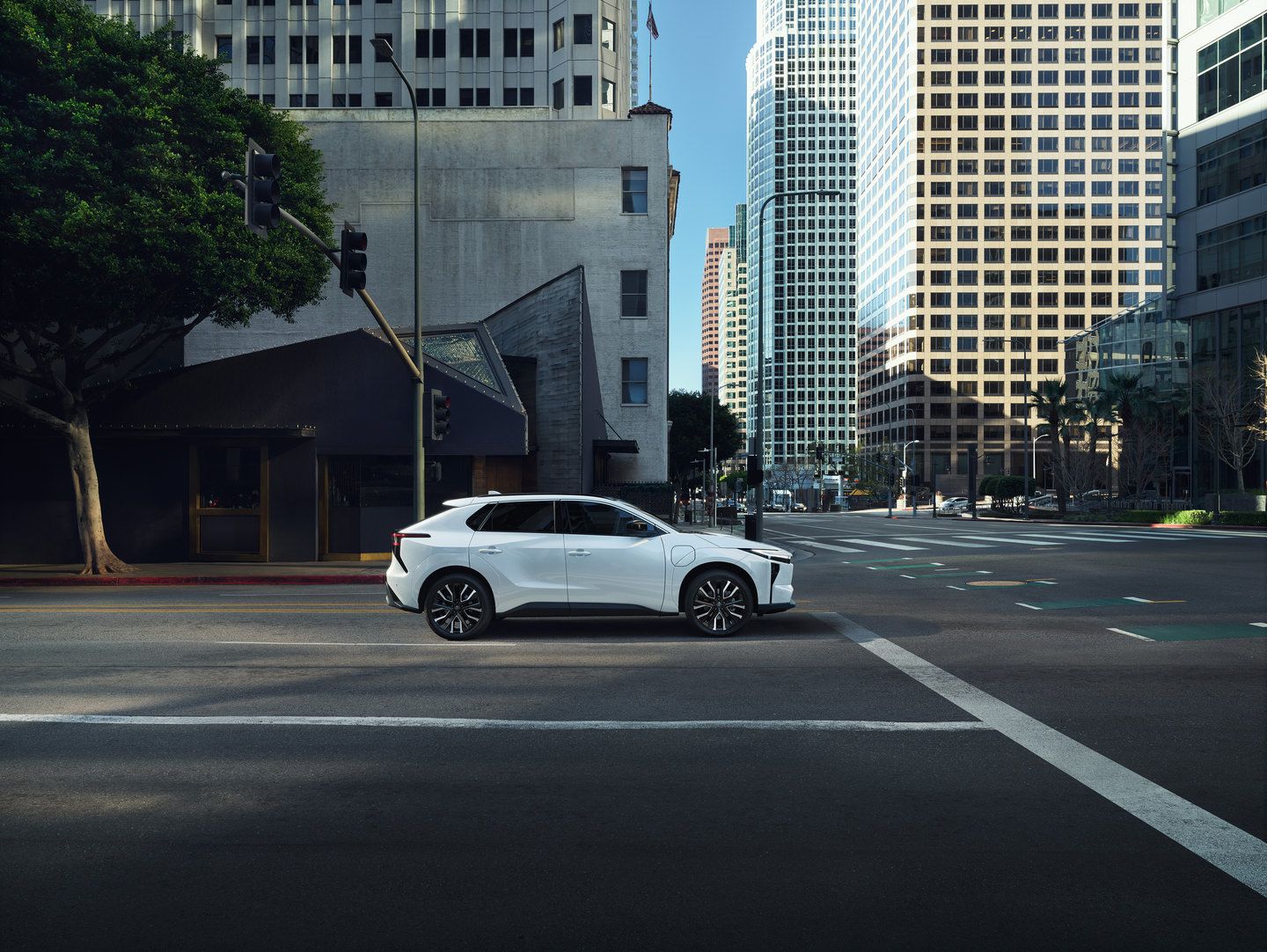
Safety technology comes standard on both vehicles, though with different generations of Toyota's systems. The 2026 Toyota bZ includes Toyota Safety Sense 3.0, the Toyota Star Safety System, Blind Spot Monitor with Rear Cross Traffic Alert and Safe Exit Assist, Lane Tracing Assist, Emergency Driving Stop System, Lane Keeping Assist, backup camera with back guidance monitor, and eight airbags. The Parking Support Brake System with object detection comes standard on XLE grades.
The 2026 Toyota RAV4 debuts Toyota Safety Sense 4.0, powered by the Arene platform with updated hardware and enhanced detection capabilities. The system represents the next generation of Toyota's active safety suite, though complete details will be available closer to the on-sale date.
Both vehicles provide comprehensive protection, with the RAV4 gaining a potential advantage through its newer Safety Sense 4.0 system.
Trim Options and Configurations
The 2026 Toyota bZ offers three grades:
- bZ XLE FWD: Entry-level electric experience with 57.7-kWh battery, 168 hp, 18-inch alloy wheels, fabric upholstery with Softex accents, heated front seats, power back door with kick sensor, six-speaker audio
- bZ XLE AWD: Adds all-wheel drive, 77-kWh battery, 338 hp, X-Mode with Grip Control, Downhill Assist Control, Crawl Control, Multi-Terrain Select System, roof rails
- bZ Limited AWD: Premium grade with 20-inch alloy wheels, panoramic glass roof with power shade, heated and ventilated front seats, full Softex upholstery, nine-speaker JBL Premium Audio, Panoramic View Monitor, digital rear view mirror, Traffic Jam Assist, Advanced Park System
The 2026 Toyota RAV4 provides extensive choice across three design themes:
- Core (LE, XLE, Limited): Modern styling with paint-matched grille, 17-20-inch wheels depending on grade
- Rugged (Woodland): Higher ride height, all-terrain tires, split grille with integrated Rigid Industries LED lighting, raised roof rails with crossbars, towing hitch
- Sport (SE, XSE, GR SPORT): Aggressive styling with up to 20-inch wheels, blue interior stitching, available two-tone paint; GR SPORT features GR-tuned suspension and power steering, enhanced body rigidity, PHEV-only powertrain
All RAV4 models in Canada come standard with all-wheel drive across both HEV and PHEV powertrains.
Cost of Ownership and Charging Economics
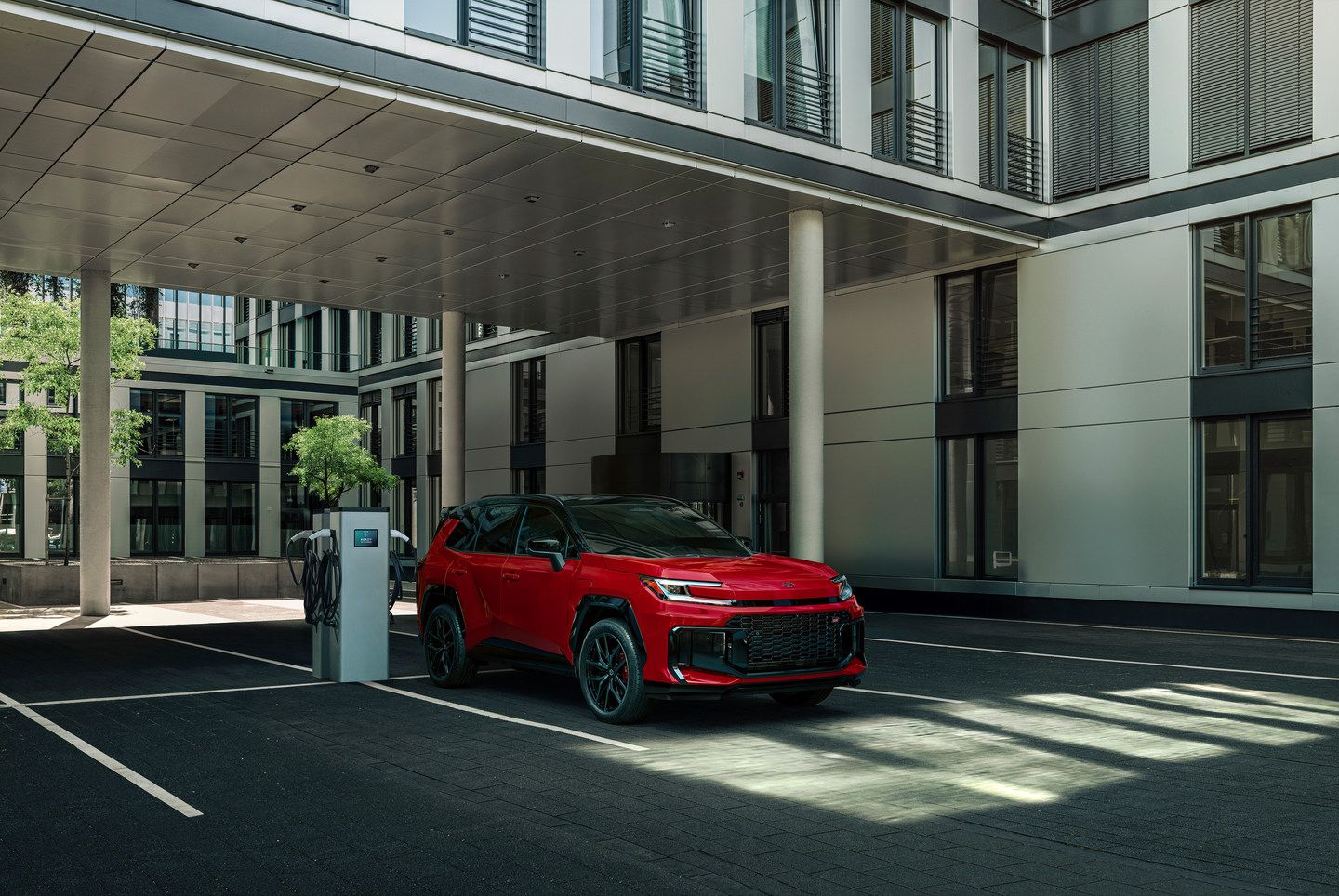
Operating cost calculations reveal significant differences. The 2026 Toyota bZ eliminates gasoline purchases entirely, relying on electricity for all driving. Ontario's electricity rates vary by time of use, but charging at home during off-peak hours typically costs less than gasoline per kilometre. The bZ requires no oil changes, has fewer moving parts to maintain, and experiences less brake wear thanks to regenerative braking. Scheduled maintenance focuses on tire rotations, brake fluid, and cabin air filters.
The 2026 Toyota RAV4 HEV still requires gasoline, though the hybrid system significantly reduces fuel consumption compared to conventional vehicles. The PHEV version offers the lowest operating costs for drivers who charge regularly and stay within the 80 km electric range for daily driving—you use electricity for commuting and gasoline only for longer trips. Both RAV4 powertrains require regular oil changes and conventional maintenance schedules.
For Oakville drivers with home charging and primarily local driving patterns, the bZ offers the lowest per-kilometre operating costs. For those with mixed driving needs or limited charging access, the RAV4 PHEV provides cost savings on daily commutes while maintaining long-distance capability.
Which Model Fits Your Ontario Driving?
Your decision ultimately depends on three factors: daily driving distance, charging access, and route predictability.
Choose the 2026 Toyota bZ if:
- Your daily driving stays within 380-468 km range
- You have reliable home charging or workplace charging access
- You want maximum electric performance (338 hp AWD)
- You prioritize zero emissions and lowest operating costs
- Your routes include access to NACS fast charging network
- You're ready to commit fully to electric driving
Choose the 2026 Toyota RAV4 if:
- You regularly drive beyond electric range
- You lack consistent charging infrastructure
- You need towing capability (up to 1,588 kg)
- You want powertrain flexibility without range planning
- You prefer the security of gasoline backup
- You value the newest Toyota technology (Arene platform, Safety Sense 4.0)
The RAV4 PHEV specifically appeals to drivers seeking electric commuting benefits without abandoning gasoline convenience—you can drive electrically most days while maintaining unlimited range for weekends and road trips.
Compare Both Vehicles at Oakville Toyota
Both the 2026 Toyota bZ and 2026 Toyota RAV4 represent strong choices for Ontario drivers, each excelling in different scenarios. The decision isn't about which vehicle is objectively better, but which powertrain philosophy matches your specific driving patterns and charging reality.
Visit Oakville Toyota to experience both vehicles and discuss your daily driving needs with our team. We'll help you evaluate your typical routes, charging options, and usage patterns to determine which electrified Toyota best serves your lifestyle.

